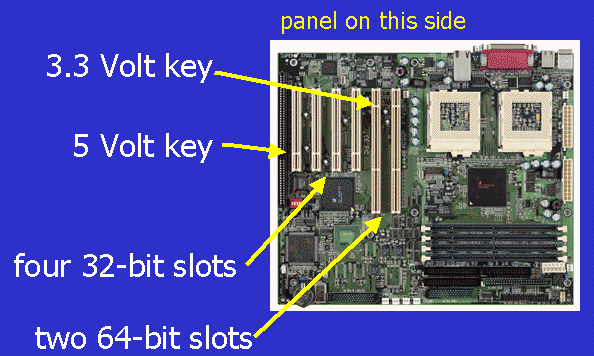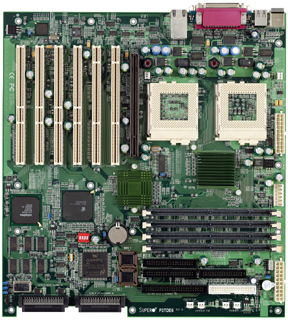

The image above shows a typical high-performance PC (year 2001) with some 64-bit slots. In the image you can see that there are four 32-bit slots (with the short connector) and two 64-bit slots (with the long connector).
The keying (the little white lines inside the connector) show the I/O signalling type used on the PCI-bus. In this case, the 32-bit slots are 5 Volt slots. The 64-bit slots use in this case 3.3 Volt signalling. In principle also 3.3V/32-bit slots can exist, but this is hardly ever used. 5V/64-bit slots do exist as well in certain machines such as industrial PCs.
A slot that uses a 66 MHz PCI clock, always will use 3.3 Volt signalling.
In fact there is no way to see from the connector if a slot is using a
33 MHz clock or a 66 MHz one.
Question
Answer |
 |

|
The S32PCI64 and the FILAR can
only work in slots that use 3.3 Volt signalling. That means you should
check if indeed the 3.3 Volt key is as shown in the picture above (a key
near the panel of the computer).
The cards will work in 66 MHz and 33 MHz environments and can work in 32-bit and 64-bit slots. So it is only the PCI signalling type of 3.3 Volt that is important to look at. Anyway, the S32PCI64 or FILAR will mechanically not fit in 5 Volt slots, so there is no risk of breaking anything. |